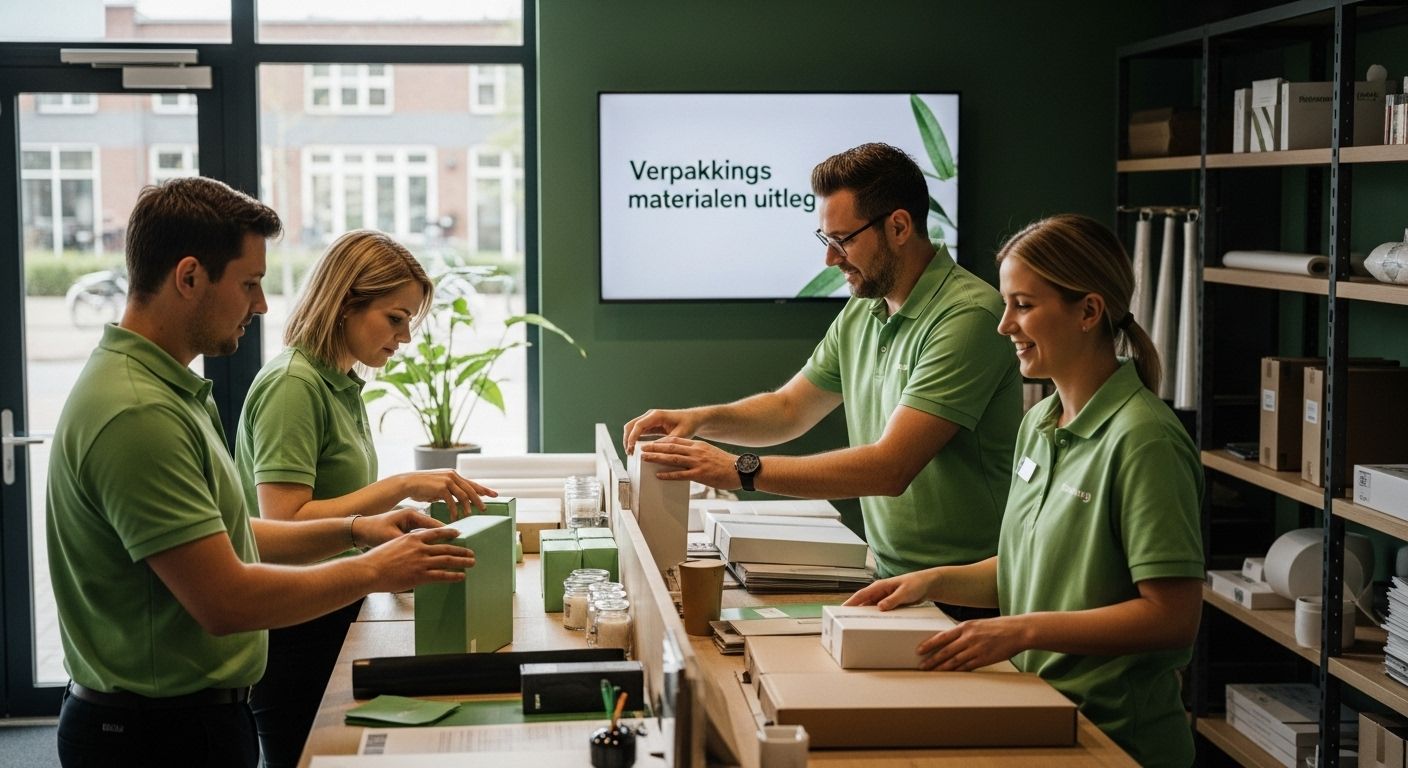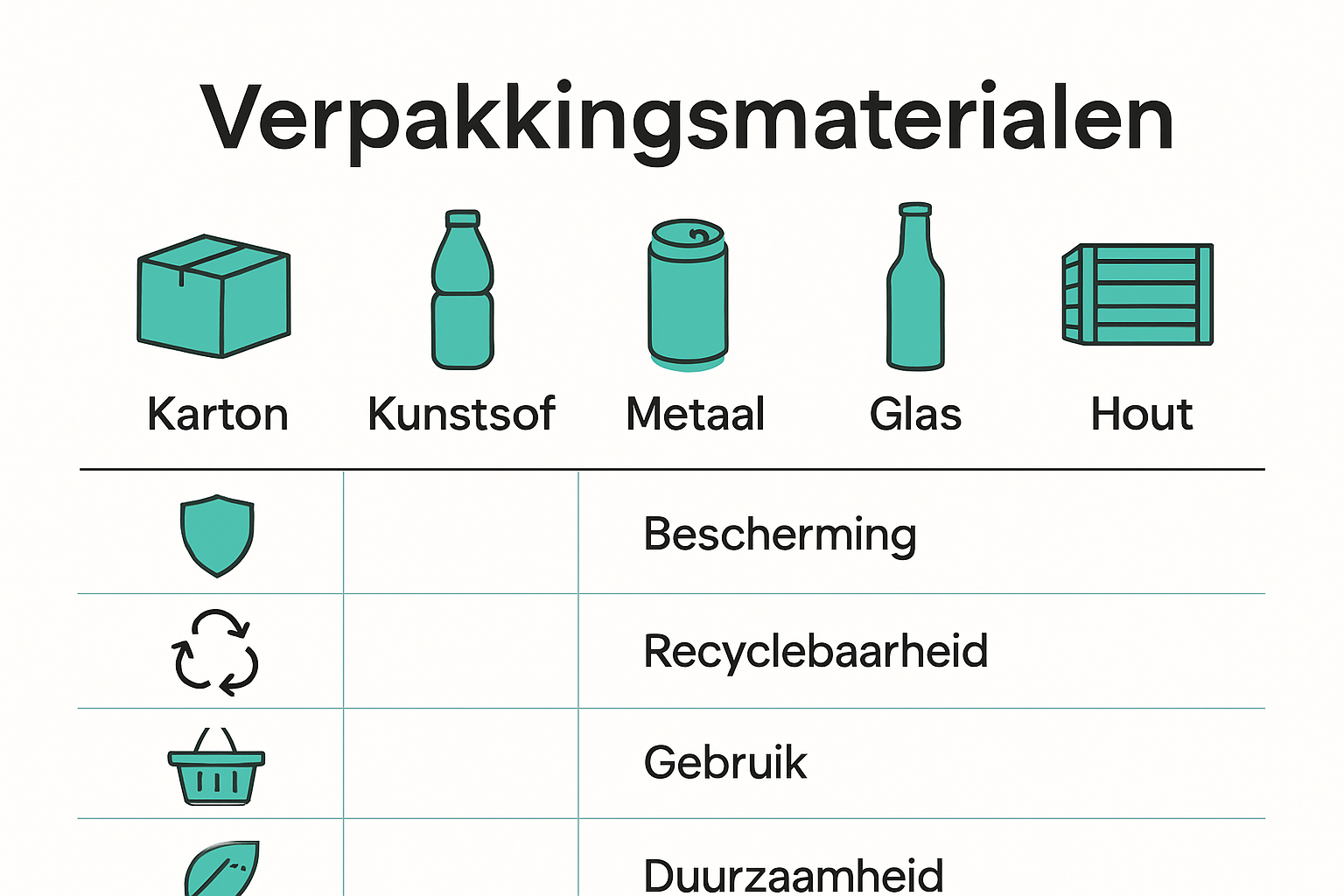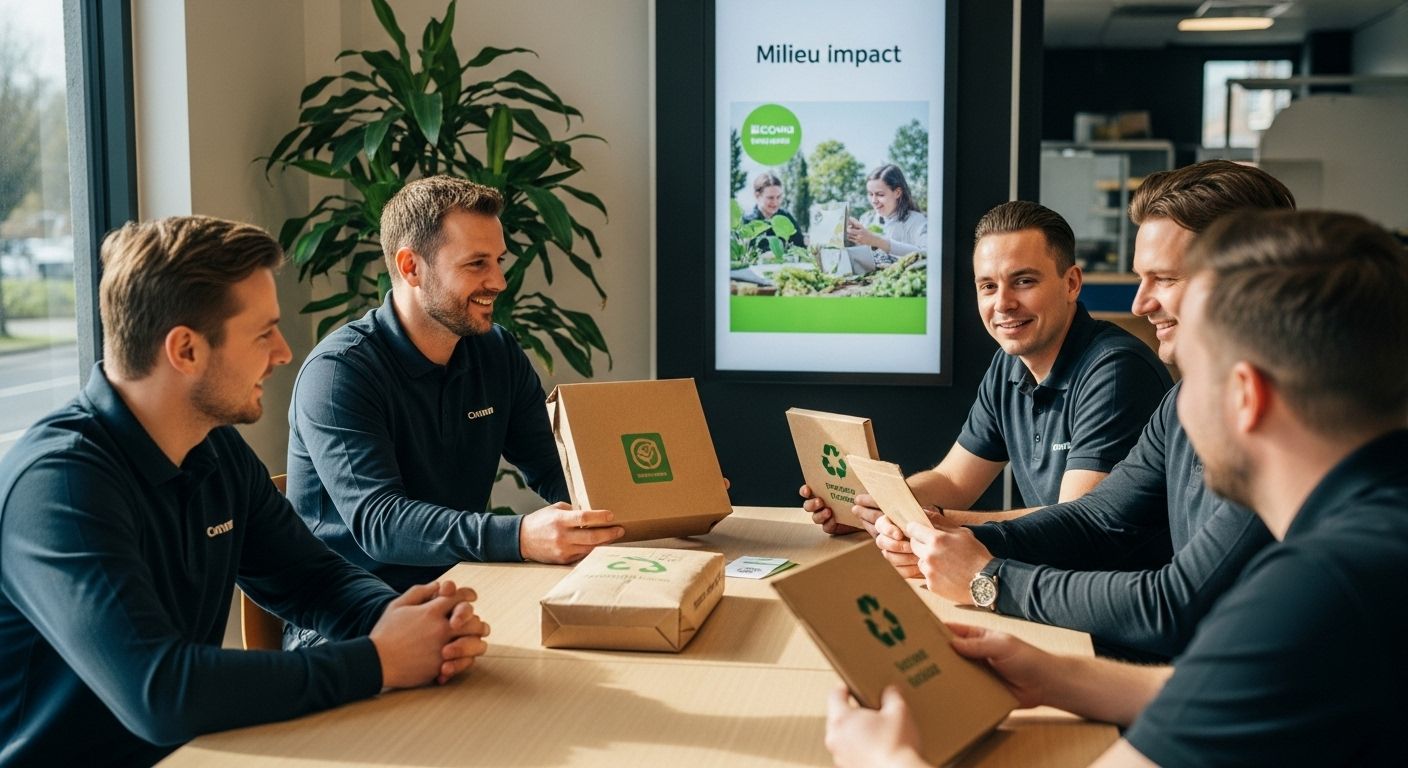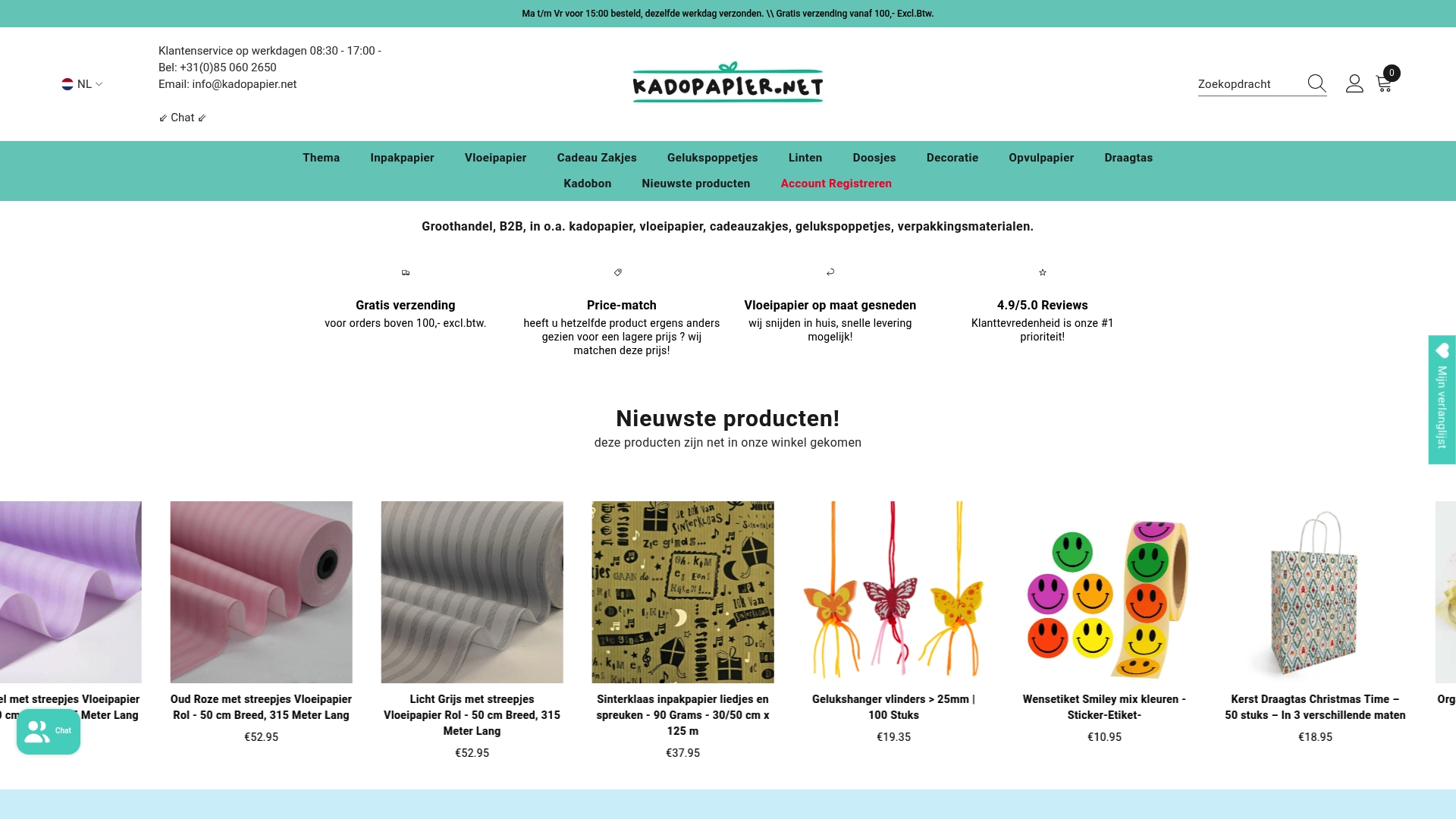Packaging materials explanation for shops and projects

Packaging materials may seem simple, but they make the difference between a safe package and damaged goods. What many people don't realize is that more than 60 percent of consumers consider attractive and sustainable packaging more important than the price of the product itself. Yet, it's not just protection and sustainability that matter. The right material can even determine whether a customer will ever repurchase from you.
Table of contents
- What are packaging materials and their functions?
- Different types of packaging materials explained
- Symbols and environmental aspects of packaging
- Practical tips for choosing the right packaging
Short Summary
| Takeaway | Explanation |
|---|---|
| Packaging materials are essential for protection. | They protect products against external influences such as moisture, light and mechanical damage. |
| Choose the right material for your product. | Each package has unique properties that are crucial for correct application and protection. |
| Environmental aspects are important in packaging. | Consider the recyclability and environmental impact of packaging materials when making your choice. |
| Use symbols for recycling and environmental information. | Identification symbols help consumers sort and understand packaging materials. |
| Integration of functionality and aesthetics is key. | Good packaging combines protection with attractiveness, which improves the customer experience. |
What are packaging materials and their functions?
Packaging materials are essential in modern commerce and daily life. They form the protective and presentation layer around the products we use, transport, and sell. Understanding these materials goes far beyond simply being a covering.
The Basic Functions of Packaging Materials
Packaging materials play crucial roles in various contexts. Encyclopedic sources point out that packaging is not only about protection, but also about presentation and efficient distribution. Its primary functions include:
- Protection : Packaging materials form a first line of defence against external influences such as moisture, light, temperature fluctuations and mechanical damage.
- Preservation : By shielding products, packaging materials extend the shelf life and quality of goods.
- Information transfer : Labels and imprints communicate essential details about contents, use, origin and ingredients.
The technology behind packaging materials is complex and constantly evolving. Industrial research institutes emphasize that modern packaging not only protects but also integrates features such as containment, security, and ease of use.
Diversity of Packaging Materials
There are numerous types of packaging materials, each with unique properties:
- Cardboard: Light, strong and extremely suitable for boxes and cartons
- Plastic: Flexible, water-resistant and available in various thicknesses
- Metal: Durable and suitable for long-term storage
- Glass: Transparent, reusable and ideal for food and drinks
- Wood: Traditional material with a natural look
Each material has specific advantages and disadvantages depending on the application. Packaging for delicate electronics differs significantly from packaging for food. Choosing the right material requires careful consideration of factors such as weight, environmental impact, cost, and level of protection.
For those interested in learning more about creative packaging techniques, check out our guide to packing tips . Packaging materials are more than a technical necessity. They're an art that combines functionality, aesthetics, and sustainability.
Different types of packaging materials explained
Packaging materials are diverse and complex, each with unique properties and applications. Choosing the right packaging material is crucial for product protection, presentation, and sustainability.
Paper and Cardboard Packaging
Paper and cardboard are among the most commonly used packaging materials. Encyclopedic sources show that these materials are versatile and environmentally friendly. They are used for boxes, cartons, envelopes, and food containers. Properties such as light weight, strength, and recyclability make paper packaging particularly popular.
Cardboard is divided into different types:
- Corrugated cardboard: Ideal for transport packaging
- Solid cardboard: Suitable for luxury packaging
- Coated cardboard: Water resistant and durable
Our guide to packaging paper provides more insight into the different possibilities of paper packaging.
Plastic and Metal Packaging
Plastics and metals offer unique advantages for specific applications. Industrial research sources highlight their diverse properties:
-
Plastic packaging:
- Lightweight
- Flexible
- Available in various shapes and densities
- Suitable for food and non-food applications
-
Metal packaging:
- Very durable
- Protects against external influences
- Excellent for preserving
- Fully recyclable
Glass and Environmentally Friendly Packaging
Glass is becoming increasingly popular due to its sustainability and reusability. It is transparent, inert, and prevents contamination. Environmentally friendly packaging is gaining importance, with materials that are recyclable or biodegradable.
Environmentally friendly alternatives include:
- Packaging made from recycled material
- Biodegradable packaging
- Packaging based on plant-based materials
- Reusable packaging
Choosing the right packaging material depends on factors such as product type, transport conditions, environmental impact, and costs. Modern packaging technologies are evolving rapidly, offering increasingly innovative solutions for various needs.

Symbols and environmental aspects of packaging
Packaging symbols are a crucial communication tool between manufacturers, consumers, and recycling agencies. They provide essential information about material composition, recyclability, and environmental impact.
Recycling and Identification Symbols
Industry organizations clarify the meaning of recycling codes, which help consumers sort packaging materials correctly. The most common symbols are:
- Triangular arrow cycle : Indicates recyclability
- Numerical codes : Identify specific types of plastics
- Green dot : Indication of contribution to packaging recycling
These symbols help consumers make informed choices and contribute to efficient waste processing.

Environmental Impact of Packaging Materials
The modern packaging industry is increasingly focusing on sustainability. Environmental aspects are assessed based on:
- Use of materials
- Energy consumption during production
- Opportunities for reuse
- Biodegradability
Discover our tips for sustainable packaging to make conscious choices in your packaging process.
International Standards and Guidelines
Packaging symbols follow international standards to ensure uniformity. Key aspects include:
- Material composition
- Recycling processes
- Environmental impact
- Food safety
These symbols allow consumers and businesses to quickly assess whether packaging is environmentally friendly and recyclable. They're a transparent way to communicate information about products and their packaging.
The evolution of packaging symbols reflects our growing environmental awareness. From simple recycling indications to detailed information codes, these symbols play a crucial role in sustainable product management and environmental protection.
Practical tips for choosing the right packaging
Selecting the right packaging is a strategic process that encompasses much more than just protecting a product. It's about finding the perfect balance between functionality, aesthetics, sustainability, and cost-effectiveness.
Product Features and Packaging Choice
Food product development manuals emphasize the importance of understanding the specific characteristics of your product. Several factors play a crucial role in selecting the most suitable packaging:
- Product weight : Determines the strength of the packaging
- Vulnerability : Protection against shock and pressure
- Storage conditions : Protect from moisture, light and temperature fluctuations.
- Transport conditions : Resistance to external influences
For example, an electrical appliance requires different packaging than a delicate food product or a fragile work of art.
Environmental and Recycling Considerations
Environmental guidelines emphasize the growing importance of sustainable packaging choices. Consider the following:
- Percentage of recycled material
- Opportunities for reuse or recycling
- Energy consumption during production
- Carbon footprint of the packaging
Discover our creative packaging tips for innovative and environmentally friendly packaging solutions.
Economic and Practical Considerations
In addition to technical aspects, economic factors are also important when choosing the right packaging:
- Cost of packaging material
- Availability of raw materials
- Production efficiency
- Transport costs related to packaging weight
- Marketing value of the packaging
Finding the ideal packaging is a balanced decision. It requires a holistic approach that considers product features, environmental impact, costs, and the ultimate user experience. Modern packaging solutions combine functionality with aesthetics, meaning they not only protect but also communicate and attract.
Good packaging tells a story. It's the first physical interaction a customer has with your product. Investing in the right packaging means investing in your brand identity, product quality, and customer experience.
Below is a summary of the main considerations when choosing packaging materials, organized by category for easy reference:
| Consideration Category | Key Factors |
|---|---|
| Product Characteristics | Product weight, fragility, storage needs, transport conditions |
| Environmental Aspects | Use of recycled material, recyclability, production energy use, carbon footprint |
| Economic & Practical Factors | Material cost, resource availability, production efficiency, transport & marketing |
Frequently Asked Questions
What are the main functions of packaging materials?
Packaging materials protect products from external influences, preserve shelf life, and provide important information about the product through labels and prints.
What types of packaging materials are available?
There are various types of packaging materials, such as paper and cardboard, plastic, metal, glass, and environmentally friendly options. Each type has unique properties suitable for different applications.
How do I choose the right packaging material for my product?
The choice of packaging material depends on product characteristics, such as weight, fragility, and storage conditions. Environmental impact and cost are also important considerations.
What environmental aspects should I consider regarding packaging?
When choosing packaging materials, it is important to consider recyclability, the use of recycled materials, and the energy and raw materials required for production.
Optimal packaging materials for shops and projects within reach
Choosing the right packaging materials, as discussed in this article, can be a challenge. You want to protect your products, create a professional image, and consider sustainability. But how do you find the ideal wrapping paper, sturdy gift bags, or the perfect ribbons that will truly make a difference for your store or project?

Don't wait any longer and discover the complete Kadopapier.net range for yourself. Everything you need for safe, sustainable, and stylish packaging can be found here. Easily search for wrapping paper, gift bags, or the latest decorations and accessories . Deliver faster and more attractively, delight your customers, and experience the convenience of ordering online. Visit Kadopapier.net now and give your packaging the upgrade it deserves.
